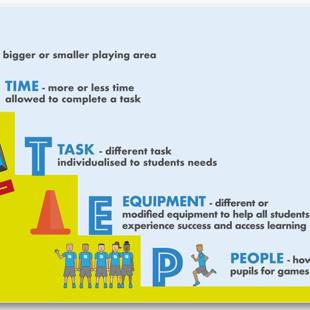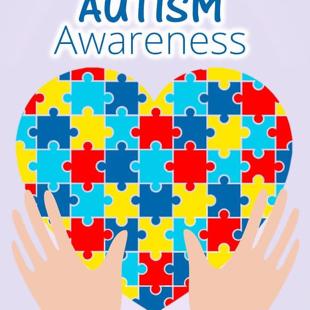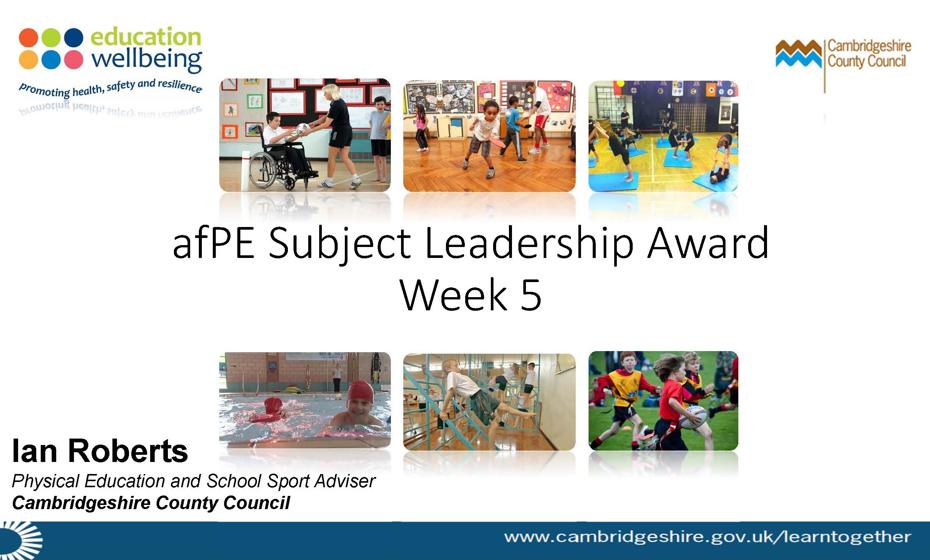
The Inclusion Agenda, and the use of assessment to inform interventions
In your lessons you will have
- Good movers who don’t think
- Good thinkers who don’t move
- Keen-beans who neither think nor move!
Has the time come where we must stop simply judging kids on their ability to perform skills?

Equalities Act 2010
It is unlawful:
- to treat a disabled person less favourably
- to fail to take reasonable steps to ensure that disabled people are not placed at a substantial disadvantage without justification
Does the issue fall within the Act?
- Yes, if the problem is attributable to a diagnosed physical or mental impairment
- No, if the problem is attributable to a social, domestic or parenting issue.
Key principles:
- entitlement – the right to participate
- accessibility – direct or by realistic adaptation or modification
- integration – participation with peers
- integrity – is the activity appropriate for all group members?
As Physical Education teachers, it is our responsibility to make sure our lessons are barrier-free and meet the diverse needs of our students – this is most commonly known as differentiation.
It has best been described as ‘the matching of work to the differing capabilities of individuals or groups of pupils in order to extend their learning’.
By planning for differentiation and integrating all pupils we ensure every student’s fundamental right to access our wonderful subject, whilst also modelling a socially inclusive society which is based upon mutual understanding and respect for individual diversity. Thus, it is essential that we acknowledge students as individuals that learn in different ways and that we need to plan for differentiation by setting suitable learning challenges for all
INCLUDING DISABLED PUPILS IN PHYSICAL EDUCATION
Around two thirds of all young people who have statements of special educational needs attend mainstream schools. An increasingly significant number of these pupils will present teachers with challenges when physical activity sessions are planned and implemented.
Appropriate provision should be made for pupils to enable them to be included and participate in physical education lessons.
The Inclusion Spectrum
In 2007 the Inclusion Spectrum was updated and has been an adopted concept since 1999 within the education field at primary and secondary levels. This principal can be used to develop a range of games and sporting activities.
The Inclusion Spectrum is an activity-centred approach to the inclusion of pupils who have different abilities in physical education games programmes. In a games or physical activity context, inclusion can be achieved by changing the environment of the activity, or the way in which the activity is presented.
The Inclusion Spectrum provides deliverers of PE and sport with options and different methods of delivery. By delivering activities differently we can balance different needs within the group. This avoids the situation where more able pupils benefit at the expense of those whose skills are still developing.
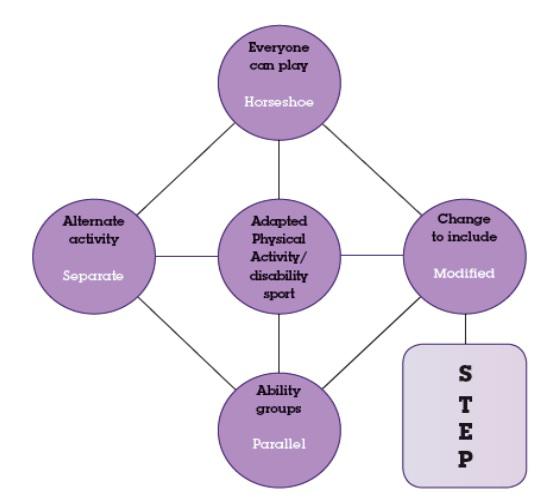
Everyone can play’ (Open) activities
Everyone can play – a simple activity based on what the entire group can do with little or no modifications (one size fits all)
Examples:
- Warm ups and cool downs where children find level of participation that suits them.
- Unstructured play, where children participate in ‘free play’, but around a theme
- Collecting or gathering games, for example, gathering up objects scattered around the playing area with the task of arranging them into like colours.
- ‘Continuous’ games, where everyone in the group participates together; for example, the whole group use balls to knock down empty plastic water bottles - as everyone is taking part at the same time, individual differences in capabilities are not emphasised.
Alternate’ (Separate) activities
Alternate/Separate activity – it may be useful for an individual or group to do a purposefully planned different activity away from the main group.
Examples:
- A young person works to develop and improve competencies and skills so that later integration will be more successful.
Swimming, hand–eye coordination activities … etc
- Note: this should not be most of the time!
Reverse Integration of physical activity
(Adapted physical Activity)
Disability Sport (Adapted physical Activity) – aspects of physical activity based on adapted physical activity or disability sport programmes can be included in all approaches; this provides specific opportunities for those children who are disabled, and a challenge for those who are non-disabled - ‘reverse integration’.
Examples:
- Children with disabilities teach their non-disabled peers a disability sport activity, like boccia or wheelchair basketball.
- Activities from the disability sport programme, such as sitting volleyball, can be built in to the regular games programme for all young people.
- Specific games like ‘goalball’, developed for athletes with visual impairment, can be the basis of a project where young people learn the rules, improvise the equipment, and organise and run small competitions.
‘Change to include’ (Modified) activities
Change to include – everyone does the same activity with adaptations to challenge the more able and support the inclusion of everyone
The STEP model can be used as a guide to adapt and modify activities.
STEP stands for space, task, equipment and people.
- S…….SPACE ( where the activity is happening)
- T…….TASK ( what is happening)
- E…….Equipment ( what is being used)
- P…….People ( who is involved)
Examples:
- Adjust the space, for example, increase or decrease the distance to a target.
- Make changes to the task, for example, ask the children to count how many times they can perform a skill
- Change or modify the equipment, for example use a brightly coloured ball to help children who have partial sight with tracking.
- Be flexible about the way that people interact with a game. Allocate roles according to their abilities and group size.
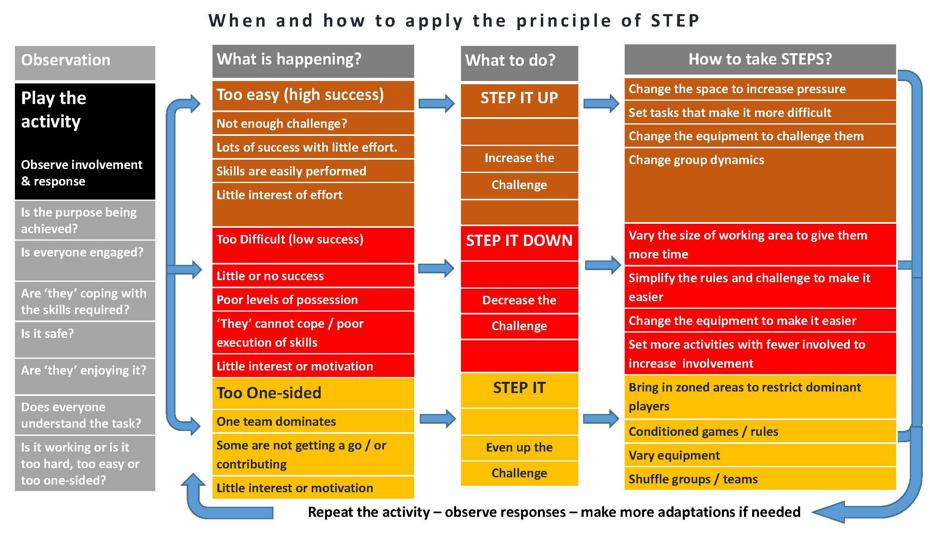
Reflective ActivityNot all disabilities can be seen… What might the Physical Education experience be like for an child with ASD (for example?) Watch the video below, and imagine that rather in a shopping centre, the boy is actually in your PE lessons? What issues could impact on his experience? What strategies could you put in place to make his PE lesson 'accessible'? |
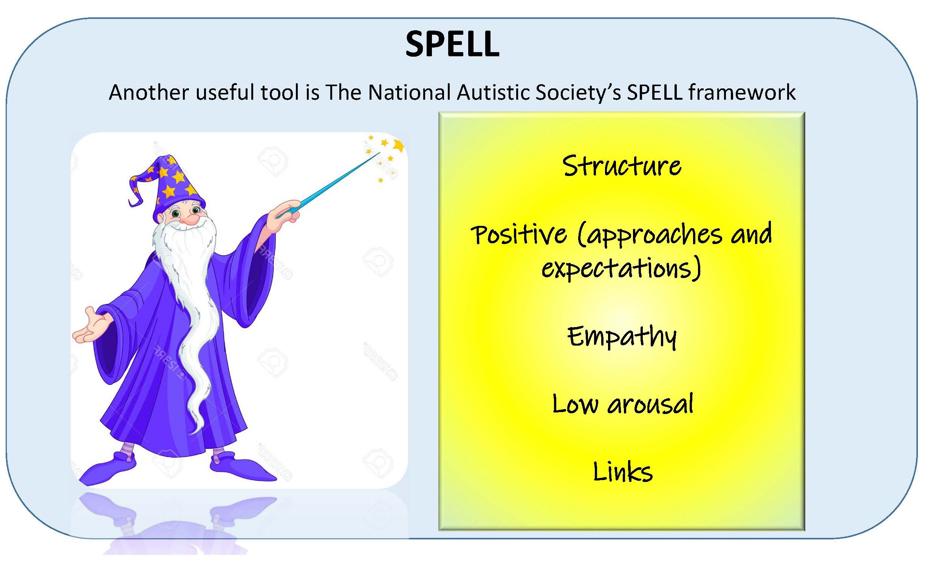
SPELL is a framework for understanding and responding to the needs of children and adults on the autism spectrum.
The elements of the SPELL framework
SPELL is an individualised and person centred approach that centres around 5 key elements:
Structure makes the world a more predictable, accessible and safer place for people with autism. Good support takes this into account and utilises it effectively to aid personal autonomy and independence by reducing dependence on others.
Positive approaches and expectations of people with autism is the cornerstone of good support. Sensitive and persistent support enables us to engage the individual, minimise regression, and discover and develop potential.
Empathy is developed by gathering insights about how the individual sees and experiences the world, finding out what it is that motivates or interests them, as well as what frightens, preoccupies or distresses them. Understanding this ensures that our support respects and reflects the position or perspective of the individual.
Low arousal support and environments are particularly important for people who have sensory-processing difficulties. Staff focus on creating approaches and situations that are calm and ordered to reduce anxiety and aid concentration. They give people extra time to process information and pay attention to potentially aversive or distracting stimuli, such as noise levels, colour schemes, odours, lighting and clutter.
Links between the various components of the person’s life and/or services are strengthened to promote and sustain essential consistency. The person we support with autism, their parents and advocates are very much seen as partners in this process.

